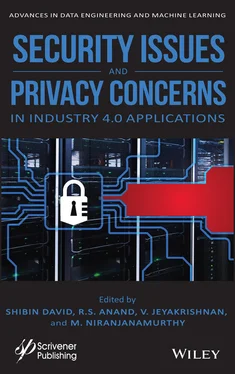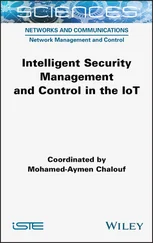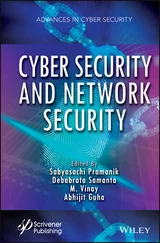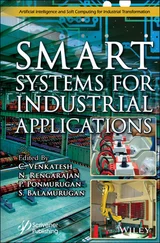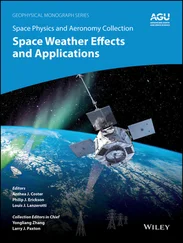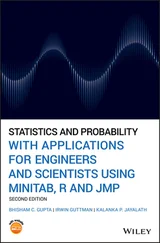1 Cover
2 Title page
3 Copyright
4 Preface
5 1 Industry 4.0: Smart Water Management System Using IoT 1.1 Introduction 1.2 Preliminaries 1.3 Literature Review on SWMS 1.4 Conclusion References
6 2 Fourth Industrial Revolution Application: Network Forensics Cloud Security Issues 2.1 Introduction 2.2 Generic Model Architecture 2.3 Model Implementation 2.4 Cloud Security Impact on M2M Communication 2.5 Conclusion References
7 3 Regional Language Recognition System for Industry 4.0 3.1 Introduction 3.2 Automatic Speech Recognition System 3.3 Literature Survey on Existing TSRS 3.4 Conclusion References
8 4 Approximation Algorithm and Linear Congruence: An Approach for Optimizing the Security of IoT-Based Healthcare Management System 4.1 Introduction 4.2 Literature Survey 4.3 Problem Domain 4.4 Solution Domain and Objectives 4.5 Proposed Work 4.6 Results and Discussion 4.7 Conclusion References
9 5 A Hybrid Method for Fake Profile Detection in Social Network Using Artificial Intelligence 5.1 Introduction 5.2 Literature Survey 5.3 Methodology 5.4 Result Analysis 5.5 Conclusion References
10 6 Packet Drop Detection in Agricultural-Based Internet of Things Platform 6.1 Introduction 6.2 Problem Statement and Related Work 6.3 Implementation of Packet Dropping Detection in IoT Platform 6.4 Performance Analysis 6.5 Conclusion References
11 7 Smart Drone with Open CV to Clean the Railway Track 7.1 Introduction 7.2 Related Work 7.3 Problem Definition 7.4 The Proposed System 7.5 Experimental Results 7.6 Conclusion References
12 8 Blockchain and Big Data: Supportive Aid for Daily Life 8.1 Introduction 8.2 Blockchain vs. Bitcoin 8.3 Blockchain Components 8.4 Categories of Blockchain 8.5 Blockchain Applications 8.6 Blockchain in Different Sectors 8.7 Blockchain Implementation Challenges 8.8 Revolutionized Challenges in Industries 8.9 Conclusion References
13 9 A Novel Framework to Detect Effective Prediction Using Machine Learning 9.1 Introduction 9.2 ML-Based Prediction 9.3 Prediction in Agriculture 9.4 Prediction in Healthcare 9.5 Prediction in Economics 9.6 Prediction in Mammals 9.7 Prediction in Weather 9.8 Discussion 9.9 Proposed Framework 9.10 Implementation 9.11 Conclusion References
14 10 Dog Breed Classification Using CNN 10.1 Introduction 10.2 Related Work 10.3 Methodology 10.4 Results and Discussions 10.5 Conclusions References
15 11 Methodology for Load Balancing in Multi-Agent System Using SPE Approach 11.1 Introduction 11.2 Methodology for Load Balancing 11.3 Results and Discussion 11.4 Algorithms Used 11.5 Results and Discussion 11.6 Summary References
16 12 The Impact of Cyber Culture on New Media Consumers 12.1 Introduction 12.2 The Rise of the Term of Cyber Culture 12.3 The Birth and Outcome of New Media Applications 12.4 Result References
17 About the Editors
18 Index
19 End User License Agreement
1 Cover
2 Table of Contents
3 Title page
4 Copyright
5 Preface
6 Begin Reading
7 About the Editors
8 Index
9 End User License Agreement
1 Chapter 1 Figure 1.1 Comparison between the estimated world population and the projected n... Figure 1.2 Characterization of the technologies in IoT-enabled smart cities. Figure 1.3 Smart city architecture. Figure 1.4 IoT with Smart-Aqua sensors via cloud. Figure 1.5 Working of OCB in agriculture.
2 Chapter 2 Figure 2.1 Network forensics process model for cloud investigation. Figure 2.2 OpenNebula: a community-based cloud management system that manages re... Figure 2.3 NetworkMiner analysis tool cloud-based forensics services. Figure 2.4 Measurement of the performance of network forensics while running clo...
3 Chapter 3 Figure 3.1 Technical framework of industrial wearable system. Figure 3.2 Proposed human–physical interaction systems.Figure 3.3 Automatic speech recognition framework.Figure 3.4 LPC framework.Figure 3.5 MFCC framework.
4 Chapter 4Figure 4.1 Histogram analysis.Figure 4.2 Graph on correlation analysis.Figure 4.3 Graph of above table.Figure 4.4 Graph of above table.
5 Chapter 5Figure 5.1 Architecture of fake profile detection.Figure 5.2 Schema for identifying and understanding the fraudulent profiles.Figure 5.3 Working procedure for proposed system.Figure 5.4 Dimensionality reduction using PCA.Figure 5.5 A classification model.Figure 5.6 SVM classification for 2-Dimensional data.Figure 5.7 Random forest classifier.Figure 5.8 10-fold cross-validation for a dataset.Figure 5.9 Efficiency vs. the number of profiles belonging to the training data ...Figure 5.10 Efficiency vs. the number of attributes selected from the profile.Figure 5.11 FP (False Positive) versus the number of profiles belonging to train...Figure 5.12 FN (False Negative) versus the number of profiles belonging to train...Figure 5.13 Performance analysis of different classifiers.Figure 5.14 Evaluation metrics (Precision, Recall and F-Score) of Random Forest,...
6 Chapter 6Figure 6.1 Arrangement of sensors and Gateways in IoT-based system.Figure 6.2 Plant monitoring using IoT.Figure 6.3 ThinkSpeak dashboard.Figure 6.4 Sensor’s Reading in ThinkSpeak.Figure 6.5 Number of reached packets vs. accuracy (PDR:10%).Figure 6.6 Number of reached packets vs accuracy (PDR:20%).Figure 6.7 Number of reached packets vs. accuracy (PDR: 30%).Figure 6.8 Number of received packets vs. FN (PDR:10%).Figure 6.9 Number of received packets vs. FN (PDR:20%).Figure 6.10 Number of received packets vs. FN (PDR: 30%).Figure 6.11 Accuracy vs no. of received packets (M.N:30%) [PDR: 30%].Figure 6.12 Accuracy vs. no. of received packets (M.N:20%) [PDR: 30%].Figure 6.13 Accuracy vs no. of received packets (M.N:30%) [PDR: 20%].Figure 6.14 Accuracy vs. no. of received packets (M.N:20%) [PDR:20%].Figure 6.15 Accuracy vs. no. of received packets (M.N:30%) [PDR: 10%].Figure 6.16 Accuracy vs. no. of received packets (M.N:20%) [PDR: 10%].Figure 6.17 False alarm rate vs. no. of received packets (M.N:30%) [PDR: 30%].Figure 6.18 False alarm rate vs. no. of received packets (M.N:30%) [PDR: 20%].Figure 6.19 False alarm rate vs. no. of received packets (20%) [PDR: 30%].Figure 6.20 False alarm rate vs. no. of received packets (M.N:20%) [PDR: 20%].Figure 6.21 False alarm rate vs. no. of received packets (M.N:10%) [PDR:30%].Figure 6.22 False alarm rate vs. no. of received packets (M.N:10%) [PDR: 20%].
7 Chapter 7Figure 7.1 Proposed architecture.Figure 7.2 Working model of the system.Figure 7.3 Drone in track.Figure 7.4 Track with garbage.Figure 7.5 Open CV with drone to scan.Figure 7.6 Working of rover in track.Figure 7.7 Collection of garbage.Figure 7.8 Spraying of sanitary lotion cleaned the railway track.
8 Chapter 8Fig. 8.1 Blockchain technology.Fig. 8.2 Works timeline of blockchain technology.Fig. 8.3 Blockchain architecture’s basic components.Fig. 8.4 Blockchain architecture.Fig. 8.5 Blockchain key features.Fig. 8.6 Blockchain components.Fig. 8.7 How blockchain cryptography works.Fig. 8.8 Working of smart contracts.Fig. 8.9 Blockchain applications.Fig. 8.10 Blockchain financial and non-financial applications.Fig. 8.11 Benefits of using blockchain technology.Fig. 8.12 Limitations of implementing blockchain.Fig. 8.13 Industries that global executives believe are most advanced in blockch...Fig. 8.14 Blockchain adoption rate is gradually increasing.Fig. 8.15 Sectors currently using blockchain technology.Fig. 8.16 Barriers to large-scale adoption of blockchain.Fig. 8.17 Barriers for blockchain adoptions by 2020.
9 Chapter 9Figure 9.1 Work flow of ML-based prediction.Figure 9.2 Framework architecture.Figure 9.3 Product and former details in web portal.Figure 9.4 Web interface of proposed system.Figure 9.5 Price prediction using linear regression.Figure 9.6 Price prediction using random forest.
Читать дальше
